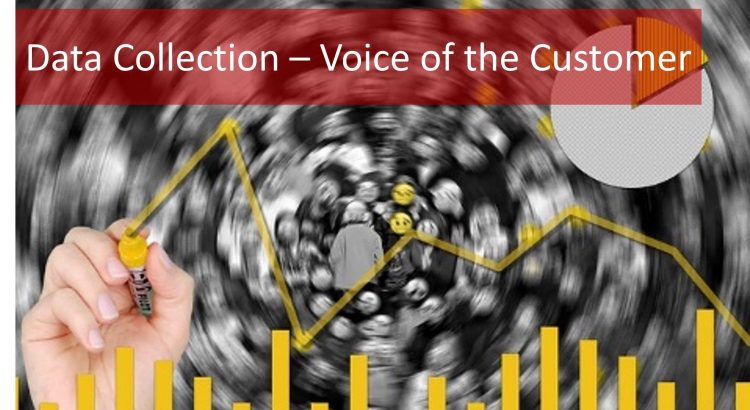In online Six Sigma training, you will learn about the importance of the voice of customer (VoC Six Sigma). According to Six Sigma principles, it tells us exactly what the customer expects of your product and gives you guidelines on how to improve your process in a way that will increase customer satisfaction and revenue. As you know, the Six Sigma approach is data-driven, and this means that we need to collect data to understand the VoC Six Sigma.
Attend our 100% Online & Self-Paced Free Six Sigma Training.
Free Six Sigma training also briefly stipulates how the VoC Six Sigma data can be obtained and this is our topic of discussion today.
VoC Six Sigma: Connecting with the Customer
Within each organization’s product and service lifecycle, there are some touch points where the company interacts with its customers. Each touch point is an opportunity to collect data from customers to better understand this concept and to influence customer behavior too. Several touch point examples, within an organization, may include customer product/service inquiries, customer visits to sales channels, the actual sales transaction, customer service contact, warranty services, etc.

VoC Six Sigma Data Collection
There are two types of VoC Six Sigma data – Proactive and Reactive. Reactive VoC Six Sigma data is based on data that the customer brings to the company through channels like customer complaints etc. Proactive VoC Six Sigma data is collected by going to the customer. Today we will only talk about the methods of collecting proactive VoC Six Sigma data. There are a few important points to remember at this stage. We are talking about collecting data for a Six Sigma project. We are talking about the project team collecting VoC Six Sigma data from internal and external stakeholders to understand their needs and expectations from a Six Sigma project. The data collection methods for the voice of customer process are as follows:
Surveys
The survey to collect VoC Six Sigma data must target defined participants. There are many reasons why a project team may wish to communicate with its stakeholders or customers. A primary reason is the evaluation of the customer’s perception of the process or product that is under consideration in the Six Sigma project and the impact of the project on customer satisfaction.
Check our Six Sigma Training Video
Focus groups
Focus Groups are useful when desired information about behaviors and motivations that are more complex than a survey would allow. Focus groups are certainly preferred over one-on-one interviews when in depth and unbiased information is needed for the project. This is an information rich way of collecting VoC Six Sigma data providing both quantitative and qualitative data points.
Customer interview
The customer interview is an important information gathering technique to understand the VoC Six Sigma. It fosters a collaborative working relationship with the customer. The interview can ask both open-ended and closed-ended voice of customer questions such as:
- “Tell us how you use the product/service…”
- “What barriers do you face with the product/service …?”
- “What issues are normally encountered and when …?”
Such voice of customer questions will provide insights on the VoC Six Sigma from individual customers and stakeholders.

VoC Six Sigma: Voice of the Business
The voice of the business or VoB Six Sigma is simply a summary of all needs related to a business and its stakeholders including profitability, revenue, growth, and market share.
The methods of collecting VoB data are as follows:
- Observation / buddy-up: It refers to on-the-job observation by the Six Sigma project team members to understand what the process, under consideration, is all about
- Checklists (Custom / Standard): It refers to adherence to the Standard Operating Procedures (SOPs) by the job holder or associate. The impact of non-adherence or noncompliance is then recorded by the project team
- Critical Incidents: It relates to capturing the job holder’s past experience on the job and then its analysis by the project team
- Diaries or log records: In this method, the job holder records the job-related activities each day. The completed job-related information is then utilized and/or analyzed by the Six Sigma project team
- Dashboards and Data Dump: The Six Sigma project team can decide to collect the VoB data with the help of various dashboards, and raw data dumps too. They analyze all such data to infer meaningful conclusions.
Voice of the Process
Let us first quickly revise what the voice of the process or VoP Six Sigma data is. It mainly refers to understanding the current process to find out what happened over a certain period of time. VoP also refers to the performance and capability of a process to perform concerning the VoC Six Sigma and the voice of the business.
Collecting voice of process data
The methods of collecting VoP data will have the combination of methods for collecting both VoC Six Sigma and VoB Six Sigma data. The voice of the process can also be collected using a capability test to see whether the current process lives up to the demands of the VoC Six Sigma and the voice of the business. It is up to the project team to decide which method is apt for their Six Sigma project.
Six Sigma is Data Driven!
The important thing to remember is that Six Sigma is a data driven approach. Without data, the Six Sigma project can not exist. The data collected for the VoC Six Sigma, VoB Six Sigma and VoP Six Sigma must be in such a format that the Six Sigma team can analyze it and make sense of it. The VoC Six Sigma is of vital importance to understand in which direction the improvement process should steer. Now let’s go collect some data!



One thought on “3 Methods for Collecting for Voice of Customer (VoC Six Sigma) Data”
Comments are closed.